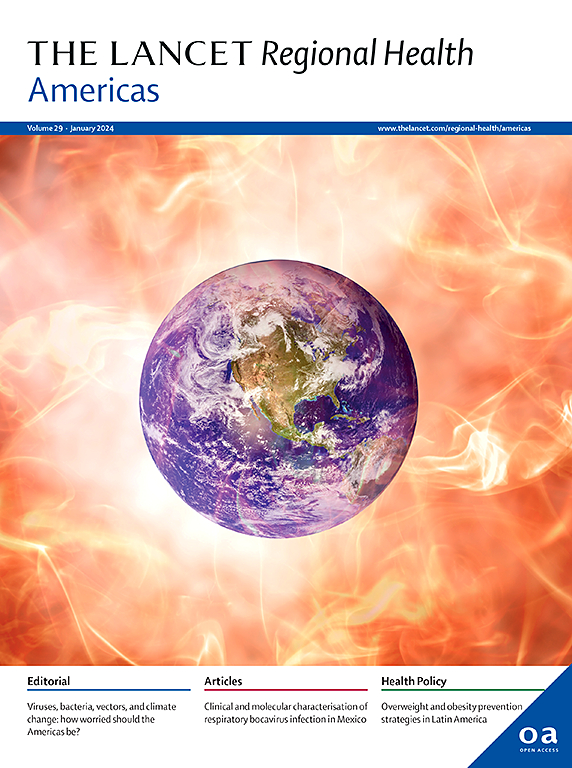Decarceration and COVID-19 infections in U.S. Immigration and Customs Enforcement detention facilities: a simulation modeling study
IF 7
Q1 HEALTH CARE SCIENCES & SERVICES
引用次数: 0
Abstract
Background
U.S. Immigration and Customs Enforcement (ICE) facilities had high rates of COVID-19 infections and mortality during the global pandemic. We sought to quantify how many COVID-19 infections could have been averted through different decarceration strategies.
Methods
We developed a set of stochastic simulation models of SARS-CoV-2 transmission in ICE facilities. Employing incremental mixture importance sampling (IMIS), we calibrated them to empirical targets derived from publicly available case time series for ICE facilities, and publicly available facility population censuses prior to vaccine availability (May 6, 2020 to December 31, 2020). The models included infection importation from extra-facility sources. We evaluated reduction of the incarcerated population by 10–90%. People who were decarcerated faced background cumulative risks of infection and detection based on a weighted average of county-level estimates from the covidestim model, which is a Bayesian evidence synthesis model.
Findings
Without decarceration, the infection rate was 5.05 per 1000 person-days (95% CrI 3.40–6.81) and case rate was 1.53 per 1000 person-days (95% CrI 1.04–2.02). Rates declined linearly when decarceration did not reduce contacts of people remaining in facilities and faster than linearly when it did reduce contacts. At all decarceration levels, rates were substantially higher when contacts were not reduced. Even with 90% decarceration, infection rates for people remaining in facilities were higher than or comparable to otherwise similar free-living people.
Interpretation
The decline in COVID-19 infection rates with decarceration was linear or faster than linear depending on how decarceration was implemented. Our findings highlight infection risks associated with incarceration, which compound other health harms of incarceration.
Funding
Stanford’s COVID-19 Emergency Response Fund; the National Institute on Drug Abuse; and the National Institute of Mental Health.
美国移民和海关执法局拘留设施的隔离和COVID-19感染:一项模拟建模研究
背景:在全球大流行期间,美国移民和海关执法局(ICE)设施的COVID-19感染率和死亡率很高。我们试图量化通过不同的去碳化策略可以避免多少COVID-19感染。方法:建立ICE设施中SARS-CoV-2传播的随机模拟模型。采用增量混合重要性抽样(IMIS),我们将其校准为来自ICE设施公开可用病例时间序列的经验目标,以及疫苗可用前(2020年5月6日至2020年12月31日)公开可用的设施人口普查。这些模型包括从设施外来源输入的感染。我们评估了监禁人口减少10-90%的情况。根据新冠肺炎模型(贝叶斯证据综合模型)对县级估计的加权平均值,被隔离的人面临感染和检测的背景累积风险。结果:未脱碳时,感染率为5.05 / 1000人天(95% CrI 3.40-6.81),病例率为1.53 / 1000人天(95% CrI 1.04-2.02)。当去隔离没有减少留在设施中的人的接触时,发病率呈线性下降,而当去隔离减少接触时,发病率呈线性下降。在所有的脱焦水平上,当接触没有减少时,脱焦率要高得多。即使有90%的脱碳率,留在设施中的人的感染率也高于或与其他类似的自由生活的人相当。解释:根据去碳化的实施方式,去碳化后COVID-19感染率的下降是线性的或快于线性的。我们的研究结果强调了与监禁相关的感染风险,这与监禁的其他健康危害相结合。资助:斯坦福大学COVID-19应急基金;国家药物滥用研究所;以及国家心理健康研究所
本文章由计算机程序翻译,如有差异,请以英文原文为准。
求助全文
约1分钟内获得全文
求助全文
来源期刊

Lancet Regional Health-Americas
Multiple-
CiteScore
8.00
自引率
0.00%
发文量
0
期刊介绍:
The Lancet Regional Health – Americas, an open-access journal, contributes to The Lancet's global initiative by focusing on health-care quality and access in the Americas. It aims to advance clinical practice and health policy in the region, promoting better health outcomes. The journal publishes high-quality original research advocating change or shedding light on clinical practice and health policy. It welcomes submissions on various regional health topics, including infectious diseases, non-communicable diseases, child and adolescent health, maternal and reproductive health, emergency care, health policy, and health equity.
 求助内容:
求助内容: 应助结果提醒方式:
应助结果提醒方式:


